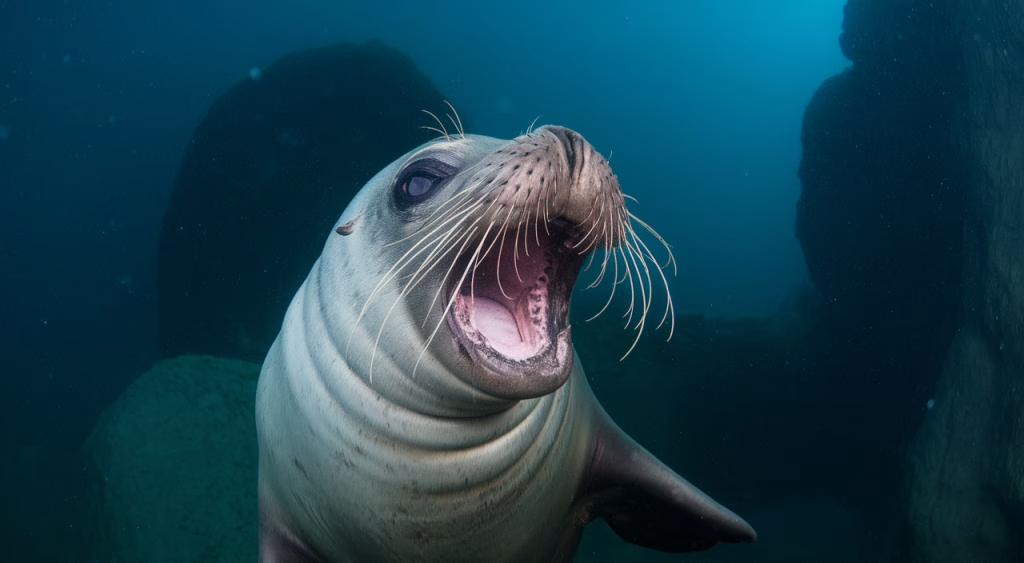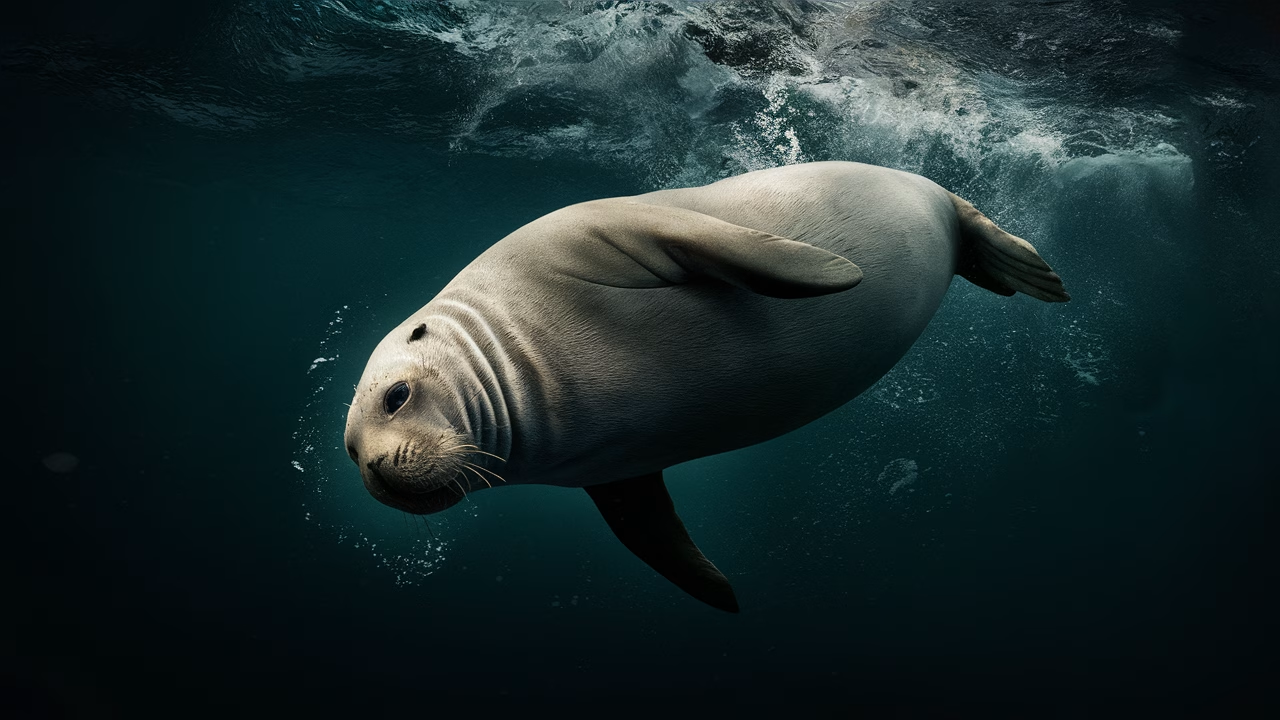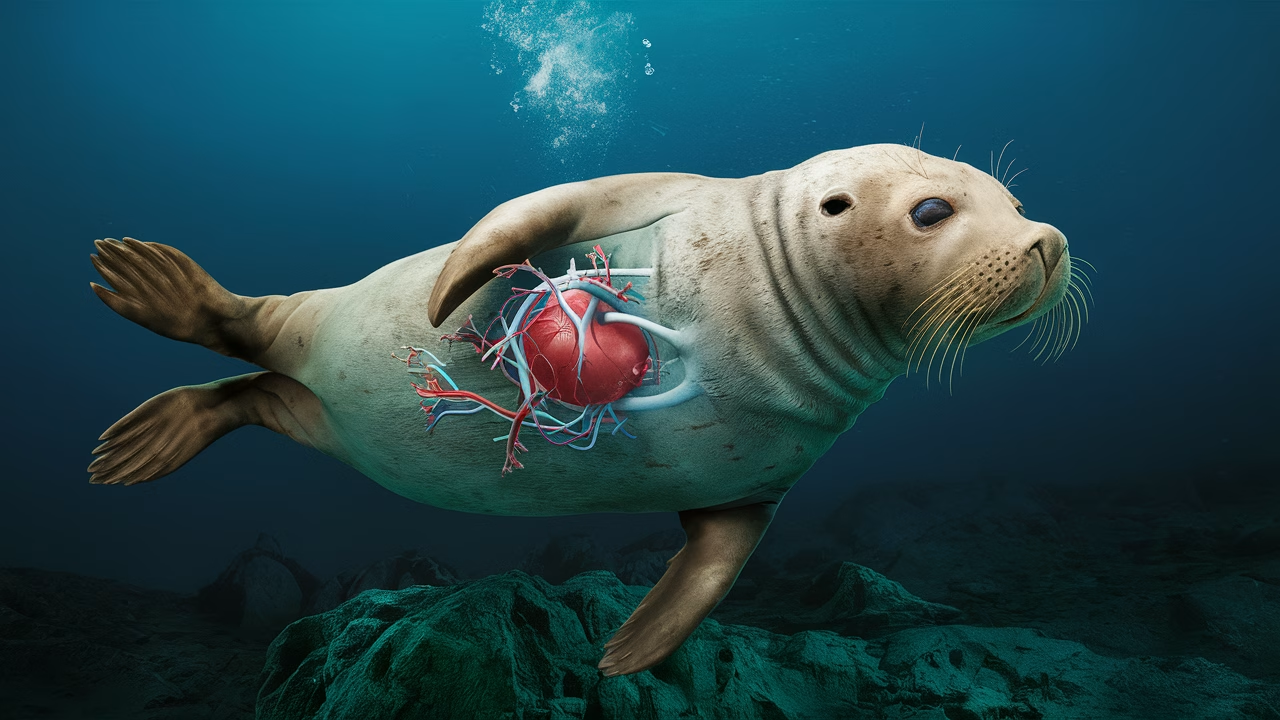How do elephant seals hold their breath underwater for nearly two hours?
Elephant seals can hold their breath underwater for up to 120 minutes thanks to powerful physiological adaptations, an advanced dive response, and efficient oxygen storage in their muscles and blood.
TL;DR: The Breath-Hold Champions of the Deep
- Elephant seal breath holding can extend beyond 100 minutes on a single dive.
- They slow their heart rate dramatically—down to just 3–6 beats per minute—to conserve oxygen during dives.
- Over 70% of their blood volume is made up of oxygen-rich red blood cells, enabling extended submersion.
- Their muscles store large amounts of oxygen thanks to high myoglobin content.
- Evolved anatomy and behaviors support extreme, deep-water survival beyond 1000 meters.
Understanding Elephant Seal Breath-Holding
A. Introduction to Elephant Seals
Imagine watching a creature the size of a small car gracefully gliding through the ocean depths, disappearing into the abyss for over an hour before resurfacing like it just took a leisurely underwater stroll. This is the incredible reality of elephant seal breath holding. These magnificent pinnipeds—both northern and southern species—are the undisputed champions among deep diving mammals. Males can weigh more than 4,000 kg and routinely dive to depths exceeding 1,500 meters. What truly captivates marine biologists worldwide is their extraordinary ability to hold their breath underwater for nearly two hours—that’s longer than most Olympic swimmers could dream of staying submerged!
B. Physiology Behind their Remarkable Breath-Holding Ability
The secret behind elephant seal diving lies in their extraordinary physiology. Unlike what you might expect, these underwater breath-holding animals don’t simply hold air in their lungs. Instead, they collapse their lungs completely to prevent nitrogen absorption and reduce buoyancy. The real magic happens in their blood and muscles, where oxygen is stored in massive quantities. Their blood volume is nearly twice that of terrestrial mammals of similar size, packed with oxygen-carrying red blood cells that fuel their extended underwater journeys.
Here’s how their incredible physiology of elephant seals works:
| Physiological Feature | Benefit |
|---|---|
| Increased blood volume | More oxygen carried in the bloodstream |
| High myoglobin in muscles | Oxygen reserve during long dives |
| Collapsible lungs | Prevents nitrogen narcosis and lung damage |
| Bradycardia (slow heart rate) | Reduces oxygen consumption |
| Selective blood flow | Prioritizes oxygen delivery to critical organs |
The Dive Response of Elephant Seals
A. How Dive Response Works
The “mammalian dive reflex” is shared by many marine mammals, but elephant seal breath holding represents the ultimate evolution of this adaptation. When these remarkable animals dive, their bodies trigger an automatic survival sequence: heart rate plummets dramatically (sometimes to just 3 beats per minute), peripheral blood vessels constrict, and blood redirects to vital organs like the heart and brain. Non-essential systems like digestion virtually shut down. Some dives exceed 100 minutes on a single breath—a feat that showcases the incredible adaptations of elephant seals for deep diving.
Research using biologgers reveals fascinating dive patterns: these deep diving mammals can remain underwater for up to 20 cumulative hours per day, with minimal surface intervals between dives. This isn’t just survival—it’s mastery of the ocean depths.
B. Effects on their Heartbeat and Body
During deep dives, the physiology of elephant seals undergoes dramatic changes. Their resting heart rate drops from 60-70 beats per minute to an astonishing 3-4 beats per minute during the deepest dives. This extreme bradycardia is essential for conserving oxygen in the depths where no air exists.
By redirecting blood flow away from non-essential organs and preserving it for the brain and heart, elephant seal diving becomes a masterclass in physiological efficiency. This automatic response is immediate, involuntary, and perfectly calibrated to diving depth—truly showcasing nature’s incredible engineering.
Evolutionary Adaptations for Underwater Survival
A. Unique Features of Elephant Seal Anatomy
The adaptations of elephant seals for deep diving represent millions of years of evolution perfecting underwater survival. These underwater breath-holding animals possess remarkable features:
- Exceptional myoglobin content: Their muscles store massive amounts of oxygen, enabling sustained aerobic function during extended dives.
- Enlarged spleens: Function as oxygen reservoirs that contract during dives, releasing additional oxygenated red blood cells.
- Flexible thoracic structure: Ribcages and lungs compress under extreme pressure without damage.
- Streamlined body design: Perfectly shaped for energy-efficient deep-water navigation.
- Advanced thermoregulation: Maintains core body temperature during long dives in frigid deep waters.
Each adaptation represents evolutionary perfection, where only the most capable deep diving mammals survived to pass on these incredible traits.
B. Comparisons with Other Underwater Diving Animals
While elephant seal breath holding is extraordinary, other marine mammals also showcase impressive diving abilities. Here’s how these underwater breath-holding animals compare:
| Animal | Max Dive Duration | Max Depth |
|---|---|---|
| Elephant Seal | 100–120 minutes | Up to 1,500 m |
| Cuvier’s Beaked Whale | 180+ minutes | Up to 3,000 m |
| Sperm Whale | 90 minutes | Over 2,250 m |
| Weddell Seal | 80 minutes | 600 m |
What sets elephant seal diving apart isn’t just duration—it’s the incredible frequency of their dives combined with minimal surface recovery time that makes them true ocean depth masters.
Final Thought: What Elephant Seals Teach Us About Survival and Adaptation
In our fast-paced world where survival often feels like a sprint, elephant seal breath holding reminds us that endurance is truly an art form. These extraordinary deep diving mammals challenge everything we thought we knew about underwater survival. From their collapsible lungs and oxygen-saturated muscles to their heart-slowing dive reflexes, every aspect of their being represents evolutionary efficiency at its finest. Whether you’re a marine biology student, researcher, or ocean enthusiast, the story of these underwater breath-holding animals offers profound insights into how life adapts to even the most challenging environments. The next time you hold your breath underwater, remember: somewhere in the ocean depths, an elephant seal is demonstrating breath-holding mastery that surpasses human capability by over 100 times.
Frequently Asked Questions
- How long can an elephant seal hold its breath?
Up to 100–120 minutes depending on the age, species, and dive depth. - How do elephant seals breathe during long dives?
They don’t. Before diving, they exchange almost all air in their lungs, and rely on oxygen stored in blood and muscle tissues. - What is bradycardia and why is it important?
It’s a slower heart rate that helps conserve oxygen and is crucial for long-duration dives. - What adaptations help elephant seals dive so deep?
Collapsible lungs, high blood volume, high myoglobin, and a large spleen are key adaptations. - Are juvenile elephant seals able to dive like adults?
No, they gradually develop diving skills and physiological control as they mature.
{“@context”:”https://schema.org”,”@type”:”BlogPosting”,”headline”:”How Elephant Seals Hold Their Breath for 2 Hours: The Ultimate Deep Diving Guide”,”description”:”Discover how elephant seals hold their breath underwater for nearly 2 hours using incredible adaptations and deep diving physiology.”,”datePublished”:”2024-06-10″,”publisher”:{“@type”:”Organization”,”name”:”Furfactips”,”logo”:{“@type”:”ImageObject”,”url”:”https://furfactips.com/wp-content/uploads/furfactips-logo.png”}},”mainEntityOfPage”:{“@type”:”WebPage”,”@id”:”https://furfactips.com/”},”keywords”:[“elephant seal breath holding”,”elephant seal diving”,”elephant seal adaptations”,”underwater breath-holding animals”,”physiology of elephant seals”],”mainEntity”:[{“@type”:”Question”,”name”:”How long can an elephant seal hold its breath?”,”acceptedAnswer”:{“@type”:”Answer”,”text”:”Elephant seals can hold their breath underwater for 100 to 120 minutes thanks to specialized oxygen storage in their blood and muscles.”}},{“@type”:”Question”,”name”:”What allows elephant seals to dive so deep?”,”acceptedAnswer”:{“@type”:”Answer”,”text”:”Adaptations like collapsible lungs, high blood volume, and slow heart rate help them dive over 1,500 meters deep.”}},{“@type”:”Question”,”name”:”Do all diving animals have a dive response like elephant seals?”,”acceptedAnswer”:{“@type”:”Answer”,”text”:”Many marine mammals exhibit a dive response, but elephant seals display one of the most extreme examples known.”}}]}





